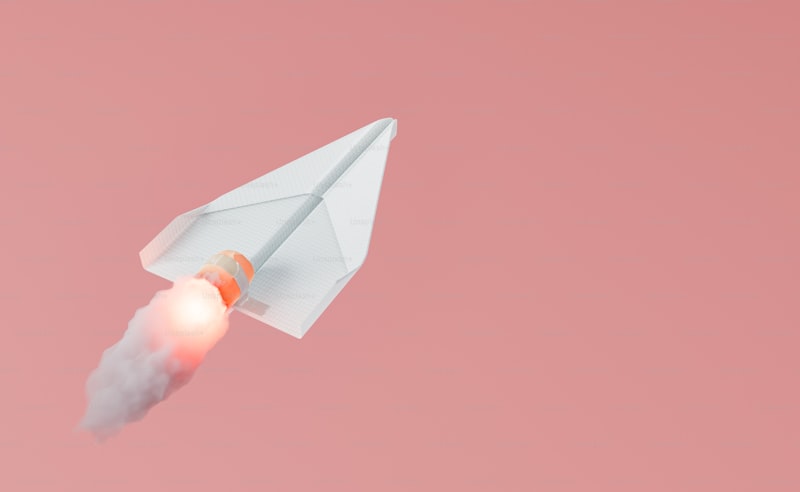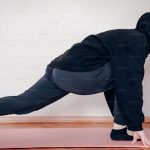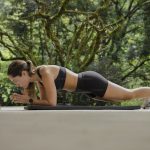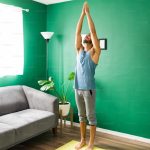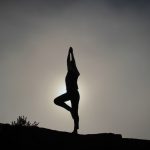Uttanasana is such a familiar pose that we often forget the finer points of the pose as we rush on to the more popular parts of our practice. Today I champion this foundation pose with a closer look at the teaching points and top tips for your students.
Forgotten Forward Fold
Uttanasana, or intense forward-bending pose, is a component of sun salutes and vinyasa, and is a dynamic part of the transition between standing and chaturanga dandasana. In this context uttanasana is transient with little time to work on the technicalities and energetic aspects of the pose. In contrast, when used as a stand-alone pose in a slower phase of a flow class it offers wonderful opportunities to develop strong legs, work on bandhas, explore reciprocal inhibition in the forward fold and lengthen the connective tissues in the back of the body.
See Also: How You Can Use The Bandhas To Become A Better Yogi
Look A Little Closer
Uttanasana is a symmetrical pose that highlights imbalances between the left and right sides of the body. As a pose that is accessible to beginners, it can really help to develop a sense of how the fascial connections throughout the body affect the shapes we make in yoga. Think back to the time you realised that a bit of knee flexion in uttanasana allows the spine to retain its normal curves. We have all had that light-bulb moment and it is commonly a turning point in practice that brings a greater awareness of how subtle changes of position in one joint can affect others.
It is also an inversion. A much more accessible inversion than head stand or handstand but with many of the usual benefits and more. Personally, I love time in uttansana because the weight of the head hanging heavy is enough to give the neck a gentle stretch. That stretch decompresses the spinal joints allowing a little stretch of the muscles and ligaments as well as a burst of nourishment.
The traction force drawing the vertebrae apart produces a negative pressure in the intervertebral discs that draws water and nutrients into the disc material. Coming upright again in subsequent poses then compresses that water out again. This cycle of compression and decompression is what keeps the intervertebral discs healthy. Whether it is sun salutes or using uttanasana as a rest pose through a class, uttanasana helps to nourish the discs and is valuable to prevent disc degeneration and beneficial for anyone already suffering from it.
Top Tips and Handy Hints for Practice
So, what do we need to remember when teaching uttanasana in our classes?
- Rag doll — This is a lovely preparation pose and is really useful to teach the beneficial effect of knee flexion in a forward fold. It is also nice for anyone with spinal problems as it facilitates the traction effect on the spinal joints. Rag doll also helps to lengthen the connective tissues elements of the back of the body in an accessible way for beginners and those with limited range of movement.
- Feet — Together for students with length over the lateral hips, or hips width apart. Feet should be parallel with the toes pointing forwards.
- Micro bend at the knees — Preventing the knees from locking out into hyper extension reduces tension in the hamstrings and allows the pelvis to anteriorly tilt. This helps the student to work towards maintaining normal spinal curves rather than being forced into lumbar flexion by tight hamstrings.
- Activate quadriceps — Engage the quads by drawing the knee caps up the front of the thigh to facilitate reciprocal inhibition: this is where the hamstrings automatically relax when their antagonist (in this case, the quads) contract. Combining the micro bend at the knee and activation of quads at the same time is a challenge but one that is well worth working on for the deepening of the pose that it brings.
- Co-contraction at the hips — As well as activating the quads, students should be cued to draw the knees together to activate the hip adductors at the same time as they are drawing back the outer, upper thighs. Ideally this co-contraction works to get knee caps facing forwards. This gives a lovely stable base from which the trunk can fold and lengthen. Working opposite muscle groups in a static contraction like this is a challenge for us all and even advanced students may need to focus on this.
- Upper limb — The lower trapezius works to draw the shoulder blades away from the neck. Shoulders externally rotate to give space around the head. Hands reach to the floor, shins, blocks or even a chair depending on the range of movement available.
- Bandhas — Gentle activation of mula and uddiyana bandhas helps to stabilise and deepen the pose.
Uttanasana Rules!
Often dismissed as uninteresting and basic, uttanasana gets a bad press which it does not deserve. Though accessible and stable, it offers a wealth of opportunities to develop muscle actions that underpin the iconic standing poses like Warriors and Pyramid Pose. Work in this foundation pose with students will bring benefits aplenty.
Wonderfully versatile, it can be used in restorative and rehabilitation settings to wonderful effect and even adapted to a seated version if required. Unlock the potential of Uttanasana, I say. Find the freedom of the fold in your classes!

